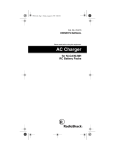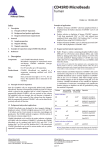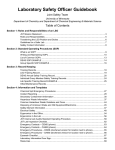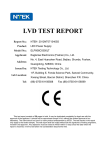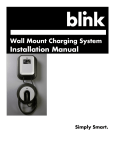Download April 2006
Transcript
Oregon Department of Consumer & Business Services n Building Codes Division April 2006 Deal with groundwater before it becomes a problem Inside By Albert Endres Park trailers can expand your product line ............................................... 2 Although we have had a pretty wet winter, the amount of rain may not be the cause of a flooded crawl space. The cause often is lack of foresight and prevention. Section 3-8.4.7 of the Manufactured Dwelling and Park Specialty Code does not require anyone to take preventative measures, but it does say that where groundwater may present a detrimental condition, the authority having jurisdiction may require one or all of the following: Electrical testing ensures homes are safe .................................................... 3 Reviewing home ownership requirements ................................... 4 Correcting the code ............................................ 5 Quizzin’ corner ................................................... 5 ● Foundation walls to be waterproofed around the perimeter of the manufactured dwelling; Make sure vinyl siding is installed properly ........................................... 6 ● A drain around the perimeter of the foundation wall to divert water away from the manufactured dwelling; and HUD changes to affect electrical, plumbing inspections ........................................ 6 ● A gravity drain installed at the lowest part of the stand or an automatically controlled sump pump, preventing the accumulation of water and terminating into the storm water drainage system or to a point above grade where erosion will not occur. Sales tips .............................................................. 7 Need an installer tag? ........................................ 7 Building Codes Division revamps several forms ...................................... 8 Continued on Page 2 Take steps to prevent site drainage problems By Dwight West Site drainage problems continue to be among the most common complaints the Building Codes Division gets from consumers. Often, the consumer was not aware there would be a problem and doesn’t want to pay for additional preventative measures. Granted, it’s difficult to tell during the push out and site prep for some homes whether there will be a drainage problem. But other sites have all the indicators for drainage or water-table problems. For example, pit-set homes on flat land commonly have water problems. Water under the home is a serious issue that can cause health problems, deterioration of the home and foundation, and energy inefficiency. But it is far easier to prevent than to cure. If retailers or contractors suspect a site will have poor drainage or a high water table, or if the home will be pit set, they need to go over this with the owners in the early stages of the deal. That way, they Continued on Page 2 Park trailers can expand your product line Two Oregon manufactured dwelling manufacturers are building recreational vehicles known as park trailers. Park trailers look like small manufactured dwelling structures. They are larger than 8.5 feet in width but do not exceed 400 square feet in the setup mode, including tip outs and slide outs. The manufacturers are building them on their existing production lines alongside HUD units. Park trailers are a great way for manufacturers to expand their product lines. And it is fairly easy to make the transition. Here is what you have to do. Register with the Building Codes Division if you intend to produce two or more park trailers per year that will bear or are intended to bear an Oregon Insignia of Compliance label, not a HUD label. Call (503) 373-7542 to request a manufacturer’s packet containing all of the necessary forms to get you started. A plant may either become certified with BCD to buy and affix Oregon labels or request individual inspections on each model produced. To become certified, a plant must submit and have BCD approve a quality-control manual. The plant also must submit plans for each model produced and have a number of units inspected to make sure it is following the proper procedures outlined in its quality-control manual and the ANZI A119.5 (2005 edition), the park model construction code. If you opt to have visual inspections in lieu of certification, you do not need to submit a qualitycontrol manual or plan. The fee for a visual inspection including the tag is $32.40. Based on the number of units the manufacturer intends to build, the visual inspections may be more cost effective. For more information, call the Building Codes Division’s recreational vehicle department at (503) 373-7542. ■ Deal with groundwater continued from Page 1 Preventative measures should start when the homeowner and contractor/dealer/installer are hammering out the details of the contract. If you have any doubt about the area, you should plan on it being wet and factor the costs of prevention into the contract. You should plan for the drain or drainage as well as seal the masonry block well before the jurisdiction gets involved. This can prevent later headaches. The plan review and/or inspector also should consider the location and site conditions. If it is probable that the site will be wet, inform everyone before the work takes place and make sure prevention is in the mix. Once we arrive at a wet site, we try to determine what the cause is and make the correction. Keep in mind we generally cannot make a contractor provide preventative measures without payment. But we can require the contractor to complete the work if the work done was improper or ineffective. This is important to remember when dealing with a homeowner. If you have any questions, please contact me at (503) 378-5975 or [email protected]. ■ Prevent site drainage problems continued from Page 1 can set up funding for preventative measures or at least disclose the potential problem to the owner. In addition, the site inspection or plot plan review should consider the possibility of a wet stand. Skirting masons should consider telling the owners to waterproof the block skirting if the site looks like 2 March 2006 a wet area and the home is to be pit set or backfilled, and they should bid the job accordingly. For more on the requirements, check out Chapter 3 of the Oregon Manufactured Dwelling and Park Specialty Code. ■ Oregon Manufactured Home Update Electrical testing ensures homes are safe By Kurt Pugh After a manufactured home is sited, it must be tested to make sure all electrical, plumbing, and gas connections are installed properly and are in good working order. In this issue, I will address electrical testing. In future additions I will review plumbing and gas testing. as a paddle fan or chandelier. Most fixtures will just go black to black and white to white for the proper connections. For other fixtures, it is a little more difficult because the neutral conductor is usually not color marked. Sometimes it is tagged, but the most common way to indicate the neutral is to put ridges or grooves on the plastic covering of the wire. The neutral conductor will be connected to the white wire. Inspectors at the factory test all homes completely and monitor each required test at least once a month. Most of our manufacturers have experienced personnel, who have been performing these production tests for years. But sometimes things get missed, overlooked, or damaged during transportation, storage, and setup — that is why the inspection at the site is so important. The last item to check is all ship-loose 240volt appliances, such as dryers and ranges, to ensure that the ground and neutral conductors are isolated. All appliances are manufactured with a strap between the ground and neutral conductors where the cord attaches to the appliance. A simple way to test for polarity is to take a continuity tester and check between the ground and neutral posts — usually the top and bottom posts — after the appliance is installed. By code, manufacturers are required to remove the bonding strap on all installed appliances. We also ask them to do it on all ship-loose appliances even if they are just going to the dealer. If you have an appliance box that has not been opened, it most likely will need the bonding strap removed. The installation instructions will show you how to do this. Here is a review of some simple testing procedures. ● Continuity test. The test is performed with the power off and ensures that the metal parts of the home are bonded together. Continuity is important because if there is a breakdown in the electrical system, the current will pass to the grounding electrode. That is why we call it “path to ground.” In a continuity test, you can go from any metal part or ground connection (receptacle). Things to check include all appliances, metal heat ducts, metal roofs, fixture canopies, metal boxes, and chassis. Chassis are important because they get connected together when the home is set up. Anything that is metal and can become energized needs to be bonded to the home’s grounding system. ● ● Function test. This test is to ensure that all ground-fault circuit interrupter, or GFCI, devices and smoke alarms are operating properly. Test all GFCI receptacle and those protected by it to ensure they are connected and in working order. You’ll also need to push the test button on all smoke alarms to make sure they are interconnected. When one goes off, they all have to sound. This also assures that the crossovers are installed correctly. Polarity test. This test is conducted with the power on once all the electrical connections have been made. The electrical system is a four-wire configuration, so the ground and neutral conductors (white wire) are isolated from each other. Checking polarity is important because if the neutral and hot conductors are reversed, exposed metal could become energized. Check all 120-volt receptacles to make sure they are wired properly and the crossover connections are installed properly. If a test fails, you’ll need to correct and retest all items. If there is a problem, contact the manufacturer. We all want to provide a safe product to our consumers, so if we each do our part we can accomplish this goal. A simple plug can be used to test polarity and ensure proper grounding. Test any fixture installed on the site of the home, such For more information on testing, see chapters 4-6, 5-4, and 6.5 of the Oregon Manufactured Dwelling and Park Specialty Code. ■ Oregon Manufactured Home Update March 2006 3 Reviewing home ownership requirements By Sherry Mitchell The Manufactured Home Ownership Program has been under way for quite some time now and appears to be going rather smoothly. Here are some updates and reminders. Updates: 1. Forms: With the exception of the Security Interest Change form, all of the manufactured home ownership forms have been revised. Visit our Web site at www.bcd.oregon.gov/lois to access these revised forms. 2. User manual: With all of the changes we have made to the LOIS system since May 2005, and a new batch of changes coming April 15 (you will be receiving information on these new features), BCD is updating the LOIS User Manual for Dealers. Reminders: 1. Trip permits: There are several homes in the system with a “pending” site address that do not show that trip permits were purchased for the move. According to the county offices, many of these homes are moving without trip permits. Remember, each dealer MUST purchase a trip permit from the LOIS system for each section of each home in Oregon prior to moving. The Department of Consumer and Business Services can revoke or suspend a dealer’s license or put the dealer on probation for moving a structure without a permit. If you have access to the LOIS system and employ a transporter who does not, you can purchase permits for the transporter. If you do not have access to the system, you can purchase permits through the county taxation/assessment office or the Building Codes Division. The only time a home does not require a trip permit is if it is a new home moving from the manufacturer to a location outside of Oregon or to a dealer lot. 2. Exemption process: BCD is constantly struggling with the many homes in the LOIS system marked “pending county exemption” that have not completed the exemption process. A home can be marked “pending county exemption” if a home is sold and the customer indicates that he or she wants to change the status of the home to real property. The dealer 4 March 2006 then should refer the customer to either a title/ escrow company or the county to complete the process. Please remember that once a home is marked “pending county exemption” in the LOIS system, the customer has 25 days to complete the process, unless there are extenuating circumstances. If the home is marked “pending county exemption” after 45 days, we send a letter to the homeowner indicating that he or she needs to either complete the process or have the home changed to “active.” These customers may be contacting you, the dealer, to make any necessary correction. Dealers should not use this status to delay generation of the ownership document. If you are not ready to send the ownership document to the customer, you should leave your “dealer holds interest” flag on until you are ready. 3. Dealer holds interest flag: Dealers can use the “dealer holds interest” flag to delay generating the ownership document. Be sure to monitor these homes and remove the flag when you are satisfied. You can run a “dealer hold” report from the LOIS system and get a list of all homes that still have the “dealer holds interest” flag. Please run this report monthly and remove your flag from all homes that you no longer have an interest in. BCD also will be monitoring this list and may contact you regarding homes on your list. 4. Security interest holders (lien holders): ORS 446.736 addresses the requirements for transfer of interest by a dealer. It is the dealer’s responsibility to transfer interest in the home on behalf of the owner unless the lender or a title/escrow company will be assuming that responsibility. If you, as the dealer, transfer interest in the home for the owner, you must submit the name and mailing address of each person acquiring a security interest. If the homeowner has not given you this information, you may leave your “dealer holds interest” flag on the home until you have the correct information. You are responsible for determining if the home is being financed and who the home is being financed through and inputting this information into the LOIS system. ■ Oregon Manufactured Home Update Correcting the code By Albert Endres It is time again to remind readers of an error in the Manufactured Dwelling and Park Specialty Code, Section 3-9.8(c). The printed edition states that the CMU retaining wall footing shall be supported by a 12-inch wide by 8-inch deep concrete with #4 rebar. The correct dimensions are 12 inches wide by 5 inches deep. The rebar is still required. While you are looking at this section, another thing that commonly comes up is that if a person uses an 8-inch x 8-inch x 16-inch block, grout or concrete filling and rebar are not required for walls with backfill up to 28 inches. If you use smaller-sized blocks, the rebar and filling are required. ■ Quizzin’ corner By Irene Lickiss It’s time for another name game. I have picked out the names of 30 active installers completely at random. Is it you? Do you know someone by that name? Have you heard of any of these installers? Can you find them all? You can go right to left, left to right, bottom up, top down, horizontal, backward, and forward. Have fun! ■ U M S B Q Z A G N C N N I C Z J R Z R S R D E C R M B H R O O Y H N B K S A W O S E I A S Q C I S S S A D N E D L A T C ALDEN AMMON ARRIAGA BEALS BETZ BROGOITTI P F T D D U L L L D L L I O T B R O S T E G T E T O D I T L O Q E P Z T O M A K R G I B B Y W J I E P Y F N Z L S B B W R H O F U R E S U F Q A E E A M S W C M I I G O R D O N V G R B N R B S M H D P BROST CHALLIS COCCIA DIEFENBAUGH DULL ELLER Oregon Manufactured Home Update N J O G T S V K W H D D B S B E A L S R E K R H H P A G A I R R A T C T N S E W A L B I O O N L X U T C U U D A T G F E GIBBY GORDON HARRISON KLINEFELTER KNIGHT MEADOWS B M T J M R D M B J U D G V E Y U H G M C W U K A Q E E L L E R H W F N V J H H I N V L S V R N Y R E T L E F E N I L K N Q W O O D W A R D V K J N A W S K Z P NELSON PERRINE ROSSMAN SAURINI SMITH SWAN I O X M H N O O Z A W E N Z G I W L Q R R P Y T V W O P M K A F K I H O C M W T U Q I N W X D M A L Z G L Y G P X C M W A M Z O Z I O H A R R I S O N H Y S O A S R A P Y N F Q B M X H M X I Q T W M C SWARTZENDRUBER THOMAS VANDERWOOD WILSON WOODWARD YATES March 2006 5 Make sure vinyl siding is installed properly By Dan Jones Vinyl siding for the end walls often is not completed at the factory. Instead, it is shipped loose and installed on site. After looking at several homes, I noticed manufacturers use different types or brands of vinyl siding products, each with their own installation instructions. Always read, review, and make sure you understand the requirements before installing the siding. The manufacturer should provide the materials and installation instructions. Although the requirements may vary, here are some common ones: ● Make sure you remove all temporary plastic material, which can trap excessive moisture inside the walls. Some homes may have a foam core-type material installed to help reduce air infiltration; do not remove this type of material. ● Ensure the starter strips, corner posts, and J-channels are still intact and not damaged. Repair or replace them if necessary. ● For fasteners, use corrosion-resistant nails or staples long enough to penetrate ¾-inch into the holding member. ● Fasten siding at stud locations; do not fasten panels tight. ● Place fasteners in the middle of the nailing slot, not at the ends. ● Ensure the proper panel seam overlap and fastener placement at the ends of the panels. ● Make sure panels are locked in place. ● Make sure panel splices are not located above windows or doors and are properly staggered. ● Cut panels to fit around windows and doors and along the top. ● Check and see if the cut panels require a snap lock punch to secure. ● Make sure siding panels move freely to allow for expansion and contraction. ● Reinstall tags, labels, or other items that need to be removed during the installation. Good installation will allow the siding to perform properly, lower rework cost, and help ensure customer safety and satisfaction. If you have questions or are unsure about the installation requirements, contact the manufacturer of the product or home. ■ HUD changes to affect electrical, plumbing inspections By Albert Endres Installation inspectors should be aware of several changes to the HUD standards that affect homes produced on or after May 30, 2006. Most significant is the move from the 1993 National Electrical Code (NEC) to the 2005 NEC. HUD has not accepted all of the NEC changes. For example, it is not requiring arc-fault protection on manufactured homes. However, if manufacturers do install arc-fault protection, they must comply with the 2005 NEC. There are a few other changes in the 2005 electrical code that HUD standards still may overrule; we have not yet heard the final interpretation from HUD. 6 March 2006 Another notable change affects plumbing systems. Water heaters now will be required to have a drip pan installed underneath them, draining to the outside of the home. Homes built before May 30 do not need the pan nor the drain. But if a home built before May 30 already has a drip pan, the pan must comply with the new code and drain to the outside of the home. There are changes that affect other disciplines, but most of them are minor or would not be part of an installation inspector’s responsibilities. As HUD provides us with more information, we will keep you informed. If you have any questions, please contact me at (503) 378-5975 or [email protected]. ■ Oregon Manufactured Home Update Sales tips By Mark Campion Separate microwave circuit can reduce customer headaches Cooking units, such as electric wall ovens, ranges, cooktops, and most built-in microwaves, have to be on their own circuit. However, a countertop microwave does not necessarily have to be on its own circuit. This can be a confusing and potentially frustrating issue. The National Electric Code (NEC) states that cordconnected portable appliances cannot draw more than 80 percent of the rated ampacity of the circuit. Most microwaves will not exceed this amount, which is one reason they are so popular. However, when that same microwave is sold “installed” into a cabinet in a manufactured home, the microwave cannot exceed 50 percent of the rated ampacity of the circuit. Most microwaves will draw more than 50 percent of the circuit, so factory-installed microwaves are almost always on their own circuit. Why the difference? No one is really sure. But having a designated microwave circuit is actually a good thing — whether you are building in a microwave or not. Here’s why. Many prospective buyers already have a countertop microwave and may not think they need a separate circuit. But problems can happen when the larger microwave is put on one of the general 20-amp kitchen circuits along with other appliances, such as the toaster, coffee maker, and waffle grill. The result is a chronically tripping breaker and a frustrated homeowner. Selling the customer a separate microwave circuit is an easy way to avoid a complaint. If the microwave has its own circuit, you’ll have no tripped breakers — and a happier customer. Sales staff at dealerships should consider making a dedicated microwave circuit an option on any new home. The extra cost is minor, but it goes a long way toward creating a happier new homeowner. Always get the customer to sign on the dotted line I deal with a lot of paperwork in my job — from auditing homeowner records to examining contracts when there is a complaint. One thing that always surprises me is that when I run across the initial sales order or confirmation order sheet, it often has not been signed and dated by the homeowner. This becomes an issue when homeowners are confused about what they ordered and what they received. Without the paperwork with the homeowner’s signature and date, it is an uphill battle to convince the homeowner that he or she was not bamboozled by the retailer. Please remember to always have the homeowner sign and date order forms. Even when there are changes to the order, have the customer initial the updated document. This also applies when you sell a lot model. Complaints seem to disappear when the aggrieved party is faced with his or her own written sign-off. ■ Need an installer tag? Did you know? ● You can fax your tag reports to Irene Lickiss, insignia specialist, at (503) 378-4101. As long as they are readable, she will accept them. ● You can mail your tag order and tag reports in the same envelope. They will get to Irene’s desk at the same time. ● We now have a “secure line” for faxing installer tag orders, when ordering by credit or debit card. That number is (503) 373-0228. This fax number is only for orders with debit or credit card numbers. Do not fax any other information to this number. Call Irene at (503) 373-1257 when using this fax number and let her know you faxed it, as it is behind another employee’s desk. Oregon Manufactured Home Update ● You can call Irene on her direct line, (503) 373-1257, if you wish to order installer tags by phone. She can take your debit or credit card by phone and have the order filled by that day or the next day, depending on the time of day your order is placed. ● You can go online and get any forms for manufactured homes. Please see page 8 for more information. Hours: Irene is available to installers from 7 a.m. to 11 a.m. Monday through Friday. There also is someone available in the SAA (Manufactured Structures) Department from 7 a.m. to 3:30 p.m. if she is not available to help. ■ March 2006 7 Building Codes Division revamps several forms Effective Jan. 1, there are new versions of the following forms. They are all available on the Internet. ● Manufactured Dwelling & Cabana Installer’s Monthly Certification Tag Report: http://bcd.oregon.gov/pdf/2507.pdf ● Manufactured Home Permit, Inspection and Insignia Application: http://bcd.oregon.gov/pdf/2698.pdf ● Manufactured Dwelling Installer and Limited Installer License Application: http://bcd.oregon.gov/pdf/2501.pdf ■ Manufactured Home Update is a regular publication of the Building Codes Division of the Oregon Department of Consumer & Business Services. Editing, design and production Kiki Hammond, designer, DCBS Communications Lisa Morawski, editor, DCBS Communications BCD Administrator Mark S. Long All information in this newsletter is in the public domain and may be reprinted without permission. In compliance with the Americans With Disabilities Act (ADA), this publication is available in alternative formats. Call Building Codes Division, (503) 378-4133. If you want to be included on the Manufactured Home Update mailing list, contact Albert Endres, phone (503) 378-5975, e-mail [email protected]. 440-2667 (4/06/COM) PRSTRT STD US POSTAGE PAID Oregon Department of Consumer & Business Services Building Codes Division 1535 Edgewater NE, Salem, Oregon Mailing address: P.O. Box 14470, Salem, OR 97309-0404 SALEM OR PERMIT NO 81









